Why 2023 is the year of millets?
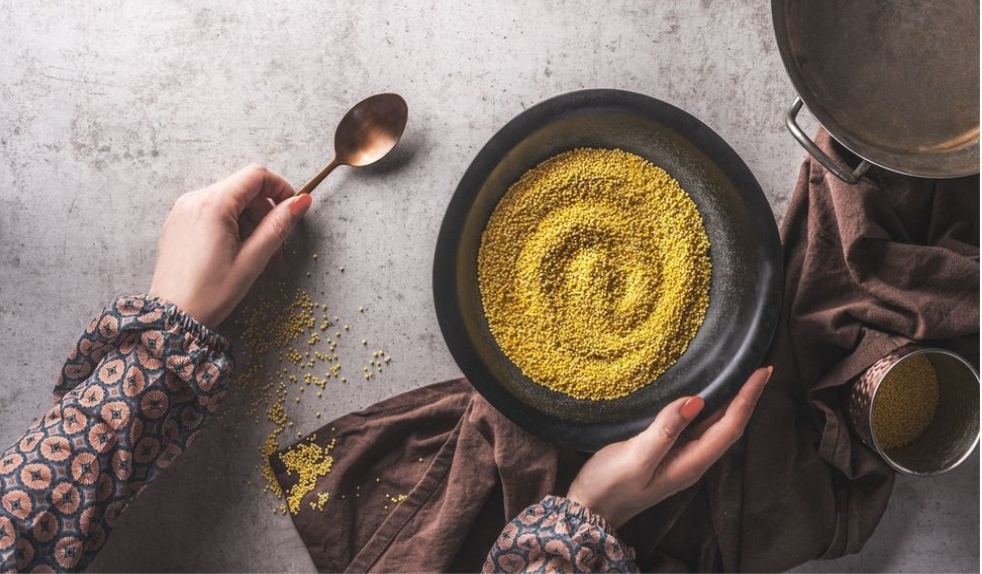
By Charukesi Ramadurai
Once a forgotten staple of traditional Indian cuisine, nutritionally dense millets are becoming popular the world over. So much so that 2023 is being dubbed “the year of millets”.
The woman squatting in front of the earthen chulha (stove) fanned the flame with the edge of her sari as she turned the bajra bhakri (flatbread made from pearl millet flour) over and topped it with a generous dollop of ghee. With a shy smile, she handed it to me on a plate with piping-hot zunka (a spicy dry curry made with chickpea flour) on the side. I was in a forest near the city of Nagpur in central India in the middle of winter, and the earthy, slightly sweet flavour of the millets seemed to warm me up from the very inside.
Millets are a group of small grains – technically seeds – that are grown on lands with poor soil quality or limited access to irrigation. They are versatile ingredients that can be used both in their original grain form in porridges and as rice substitutes, or as flour to make flatbreads and other baked goods.
Once a staple in traditional Indian cooking, millets fell out of favour over the years, and have been making a slow comeback in India and across the world. To keep this momentum going, the United Nations has declared 2023 the International Year of Millets.
At the announcement ceremony in December 2022, Qu Dongyu, the Director-General of the UN’s Food and Agriculture Organization, spoke about the nutritive value of millets and their invaluable role in empowering small farmers, tackling food security issues and achieving sustainable development.
While this may be news for much of the Global North, millets have been staple food in India (and parts of Africa) for several centuries, having come from China at least 5,000 years ago. There are nine kinds of millets cultivated across various regions in India, such as sorghum, finger millet, little millet, kodo millet, foxtail millet and barnyard millet. These vary in colour, size and texture, but share roughly the same nutritional profile. And all of them have local names in many Indian languages, attesting to their historical popularity across regions.
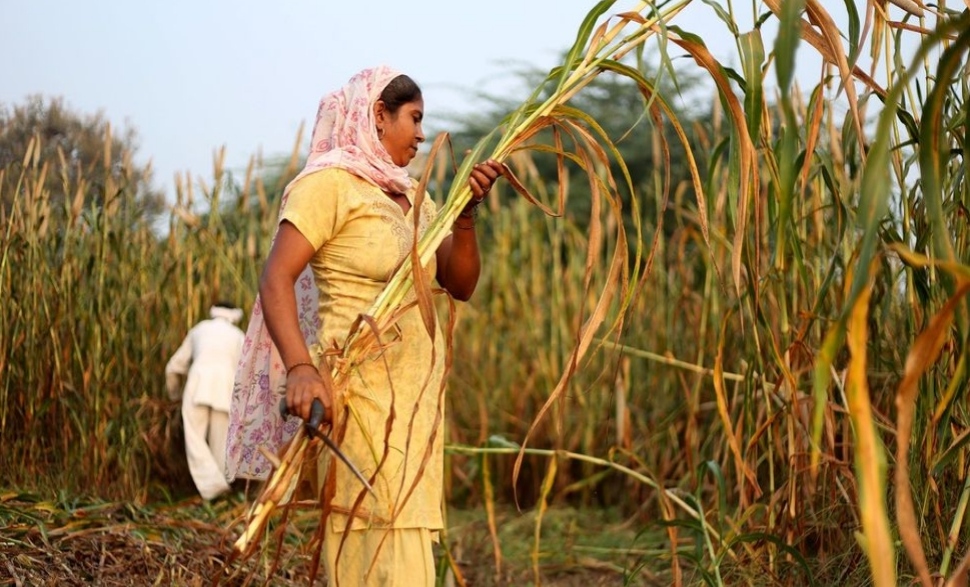
Once a staple in traditional Indian cooking, millets have been making a comeback in India and across the world
Nevertheless, their ubiquity in India waned after the Green Revolution in the 1960s, when the Indian government pushed for hybrid, high-yield varieties of wheat and rice to increase food production for both domestic consumption and export. Being officially called a “coarse grain” didn’t help millets’ cause either, as this designation signified something less desirable to processed rice and wheat.
Millets began to be seen as the food of rural and tribal communities, who ate rustic dishes like ragi mudde (steamed balls made with finger millet) and jowar roti (sorghum flatbread) as cheap and filling meals. However, for pastoral folks, millets were much more than sustenance. For example, they believed that consuming bajra raab (a thin porridge) would help build immunity against winter colds, and they would talk about how just two energy-packed ragi (finger millet) balls – eaten with a spicy, thin stew in the morning – would keep farmers fed for the whole day. Women, like the one who fed me the bajra bhakri, would pass the know-how of these dishes down through the generations, keeping the tradition of millet-based meals alive in rural India.
Now, mainstream society is beginning to understand and appreciate the long-lost benefits of millets too. Manu Chandra, chef and founder at Manu Chandra Ventures, who has been championing millets for years, rues, “With modernisation and increasing conveniences, we have forgotten what used to be traditional and lost sight of what our grandmothers used to cook. Given that we Indians have the highest rate of diabetes in the world, including millets in our diet just makes sense, but [they have been] sacrificed at the altar of rice and wheat.”
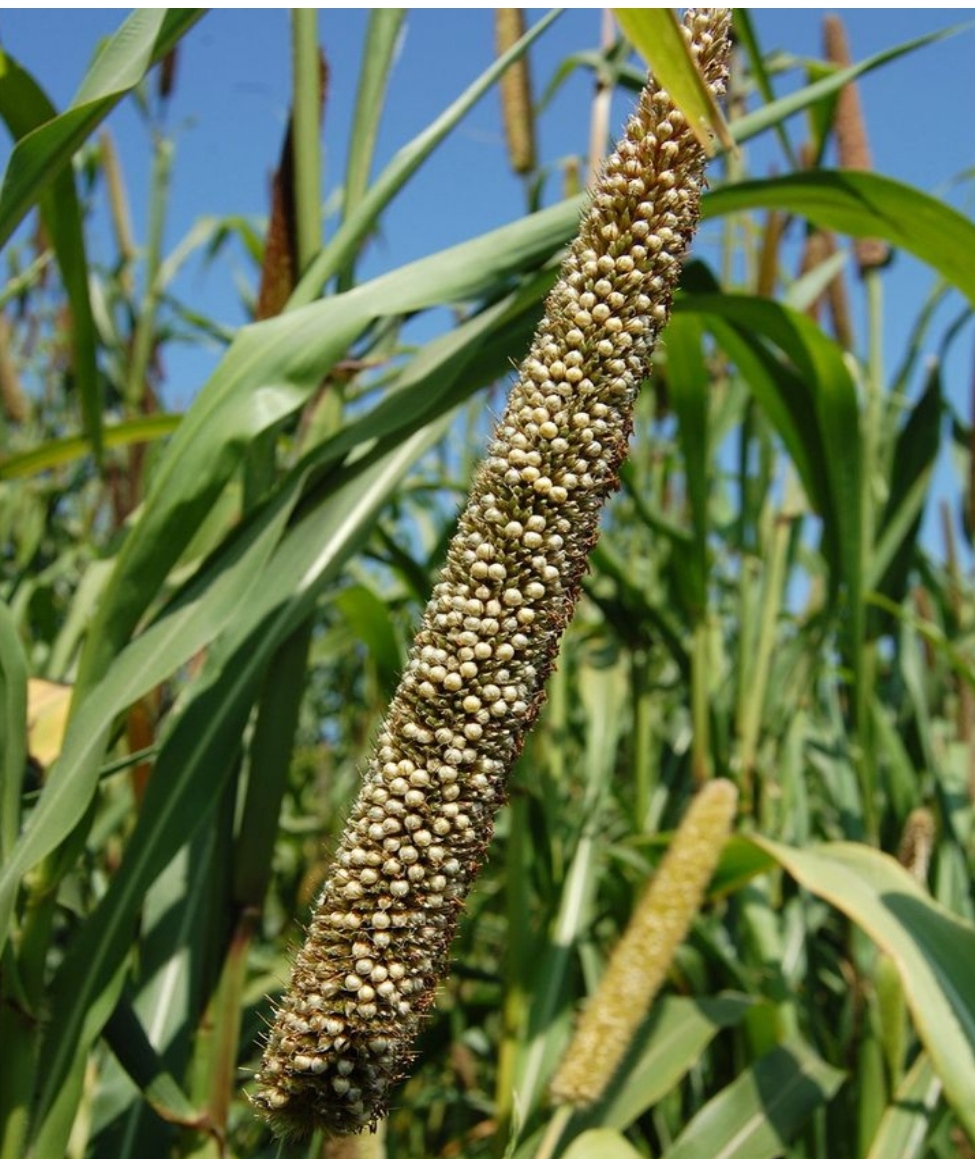
Millets are a group of small grains – technically seeds – that are grown on lands with poor soil quality or limited access to irrigation
According to Mumbai-based holistic nutrition expert Amita Gadre, “Millets are not just naturally gluten-free, they also have much higher levels of iron and calcium than processed wheat and rice. They are also very rich in fibre, which makes them a good choice for those trying to control blood sugar or manage insulin resistance.” One hundred grams of ragi grain, for instance, contains 344mg of calcium, compared to only 33mg in rice and 30mg in wheat.
And then there’s also the agricultural benefits of growing millets. Amrita Hazra, associate professor of chemistry at the Indian Institute of Science Education and Research in Pune and founder of The Millet Project at the University of California Berkeley, explained that millets are hardy crops that don’t need much water or fertiliser, and can be grown in arid conditions. “Lands that can’t sustain anything else can still have millets growing on them,” she said. “They have a short cycle and can be grown between major crop seasons, and they also enrich the soil with their own seed.
last decade the Indian government has begun to encourage the growth and consumption of millets, starting with rebranding millets as “nutricereals” instead of calling them “coarse grains”. A diplomatic push at the international level to promote millets globally soon followed, with the intent of making India a major hub for millet production.
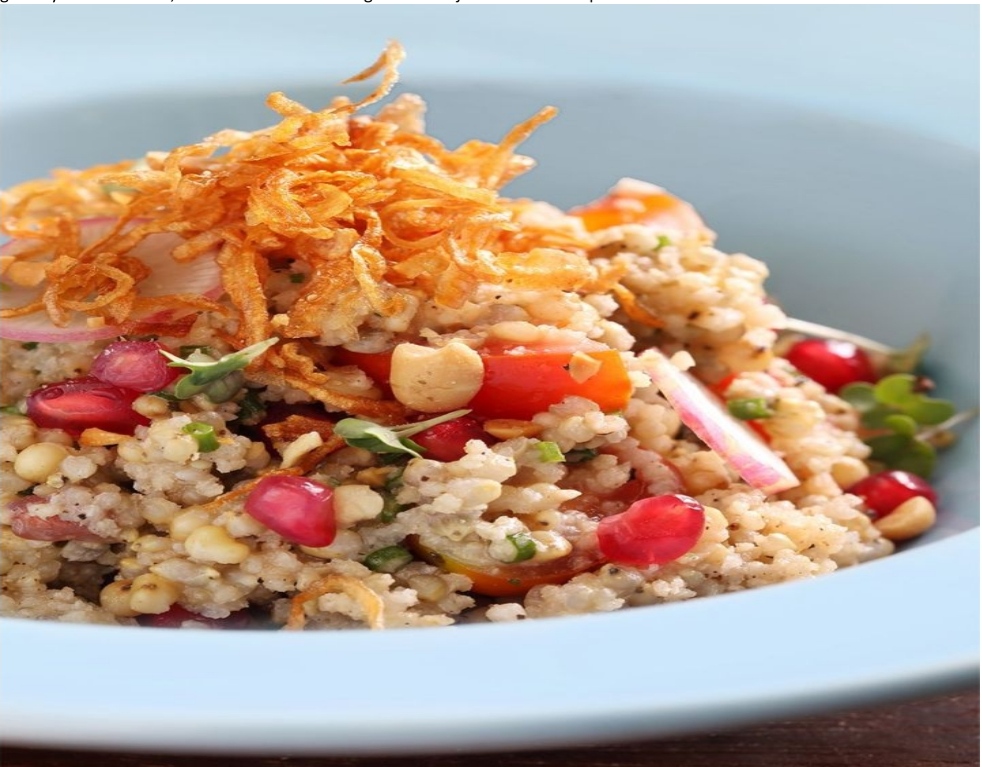
Four millets salad from Toast & Tonic, with locations in Mumbai and Bangalore
Millets are now slowly finding their way back into Indian diets across the social spectrum, from affluent consumers who look to trendy foods (like quinoa and kale) in their search for wellness to middle-class mothers who are finding clever ways to sneak the nutritious grains into family meals.
Influential restaurant chefs have also been giving them a fillip through fusion recipes. The menu at The Bombay Canteen in Mumbai, for example, often features millet dishes such as barley and jowar (sorghum) salad, and vegetarian haleem with a mix of kodo, proso and foxtail millets (a savoury porridge usually made with meat, wheat and lentils). Nearby, Noon serves a range of millet tortillas and dosa, while Soam offers jowar pita pockets and ragi pancakes. In Bangalore, Go Native serves up rustic millet khichdi (a porridge usually made with rice and lentils) and ragi pizzas. And at Toast & Tonic, with locations in Mumbai and Bangalore, millet is added to arancini and kibbeh.
According to Chandra, “For millets to become truly broad-based, they need to be presented in a form that is more acceptable for today’s generation instead of holding on to traditional recipes and ways of cooking.”
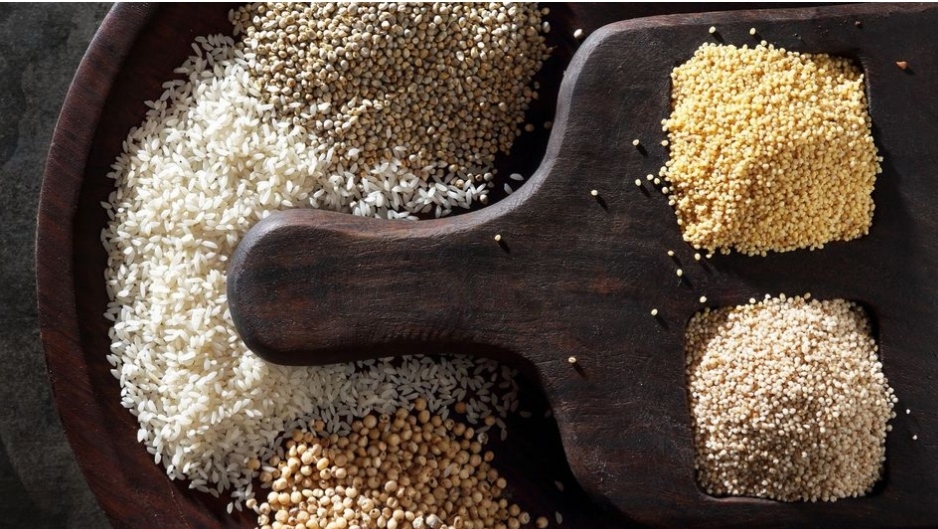
Different kinds of millets, varying in colour, size and texture, are cultivated in India
Millet companies such as Tata Soulfull and Slurrp Farms are doing just this, in the form of snacks and ready-made meals such as chips, chakli (a savoury fried snack usually made of ground rice and lentils), noodles, pancake mixes and breakfast cereals. Prashant Parameswaran, managing director at Tata Soulfull, says that the inspiration for creating the brand came from the growing interest in eating quinoa he observed more than a decade ago when he lived in the United States. “I thought, why not our Indian millets?” he said.
All of this is adding to what Gadre calls “diversity on the plate”, as she considers millets, along with other staples like rice and wheat, to be crucial for a balanced and varied diet. Other experts agree. According to food writer and nutritionist Nandita Iyer, “Millets are part of the larger biodiversity story in India… Along with the added fibre that helps control sharp spikes in blood sugar levels, eating millets also gives us more varied tastes and textures in our meals.”
Millets are part of the larger biodiversity story in India
There are even millet-based beers offered by microbreweries and gastropubs across the country to wash all these millet dishes and snacks down. At his craft brewery, Great State Aleworks in the city of Pune, Nakul Bhonsle aims to “always have one millet beer pouring, and create a new one every three months”. Currently in the pipeline is a new jowar pilsner. “I wanted my craft beer to be local in every way, and millets fit into our vision because they are cultivated in Maharashtra [the state in which Pune is located],” he said. “Globally, millet beers are about being gluten free, but for us, it is about working with the farmers.”
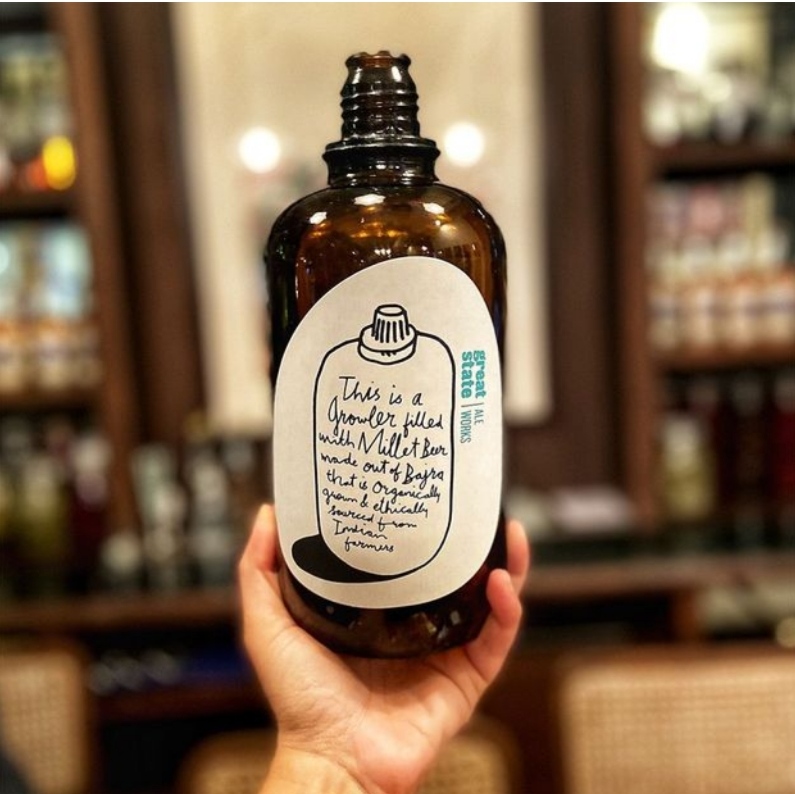
Great State Aleworks in the city of Pune is creating millet-based beers
Parameswaran sums up what many consider the significance of millets: “Millets are good not just for the consumer, but also for the farmer and for the environment. [Embracing millets] enables conscious consumers to say, ‘this is my way of contributing to climate change’. So, this is more than a “super food”, it is a smart food.”
Given that India is already the largest producer and one of the biggest exporters of millets, the global attention on millets this year is sure to come as boost for Indian farmers. As for consumers, the classic cycle of what’s traditional becoming trendy again, has already begun.



